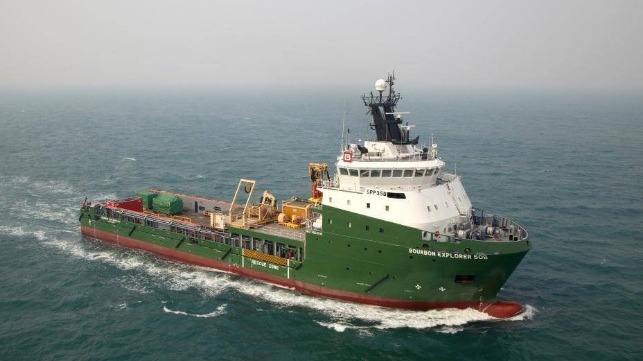Designs Begin for Zero-Emission PSV Using Amogy’s Ammonia Power Technology

Bourbon Horizon a joint venture between the Bourbon Group and Horizon Maritime operating in the Norwegian offshore market, plans to operate possibly the world’s first ammonia-powered Platform Supply Vessel (PSV) which will be developed by Green Ships, a Norwegian design firm. They have signed a memorandum of understanding with Amogy, a U.S.-based startup funded by Amazon, Aramco, and Mitsubishi, among others, that is developing the first ammonia-to-power technology.
“This project will be the first of its kind for a zero-emission ePSV,” says Per Kavli, CEO of Green Ships. He explains the project calls for employing Amogy’s power technology aboard Green Ships’ design for a next-generation, environmentally-friendly PSV. The agreement calls for the construction of two PSVs using the ammonia technology and an option for a third vessel.
Green Ships has developed a design for a 269-foot PSV with 1,000 square meters of deck space. The design envisions using a Voith main propulsion system with a hybrid diesel-electric power plant fulfilling Tier 3 requirements. The design for a 4,200 dwt vessel is modular and can be adapted to different offshore applications.
The ePSV Green Ships reports will have up to 40 percent reduction of the power needed in all modes of operation, both in terms of transit, idling, on dynamic positioning, and in port. The design has been optimized to minimize the overall footprint, with a vertical bow and slender hull form and using elements such as low steel weight, reduced power plant, a smaller but highly effective thruster system, and fewer main components for low maintenance to create a versatile. Green Ships calls for fitting the ePSV with two 1.850 kW main thrusters, a built-in active roll reduction system, and submerged thrusters that will avoid suction of air into the five thrusters.

Plans call for incorporating Amogy's ammonia technology into Green Ships design for a hybrid PSV (Green Ships)
Under the new agreement, Amogy’s ammonia-to-power solution will be integrated into the ePSV power plant system as the primary power source for the vessel, enabling zero-emissions operations. To secure uninterrupted operations at sea, the ammonia tank capacity will be in the range of 100 cubic meters. The complete system will be contained with a design to avoid leaks, ensure good ventilation, and adhere to the protocols under development by DNV for ammonia fuel operations.
“For smaller ships, such as a typical PSV size, liquid ammonia is mainly considered in combination with fuel cells and large size batteries,” explains Christian Berg, Managing Director, Amogy Norway. His company however is offering the first available powerpack that includes a cracking technology converting liquid ammonia to hydrogen gas for direct integration into the fuel cells.
To date, Amogy’s ammonia-to-power technology has been demonstrated in a drone, tractor, and semi-truck. The Amogy team is currently retrofitting a tugboat to be the world’s first ammonia-powered vessel. In June, Amogy reported it had received a pre-order from a Norwegian shipping company for its power technology.
“The successful scaling of zero-emission technology and innovative ship design is crucial for reaching the regulatory requirements of the maritime sector,” said Bjørn Remøy, Managing Director, Bourbon Horizon. He believes this new design will launch a new generation of PSVs into the offshore market and fill a critical market need.
The offshore sector is one of the first that is looking toward new technologies to meet the emissions challenges. Today’s global PSV fleet is generally between 10 and 20 years old, meaning it does not comply with the emerging industry emission requirements.
Bourbon Horizon was launched earlier this year as a dedicated provider focusing on the North Sea and Canadian offshore markets. The company currently operates five PSVs, a large AHTS, and a MPSV configured for subsea and trenching services.
